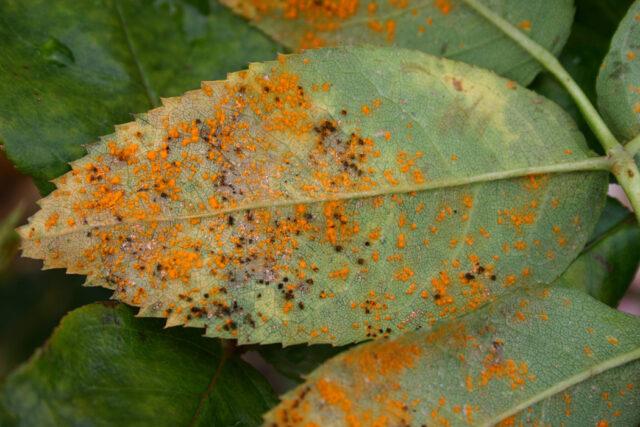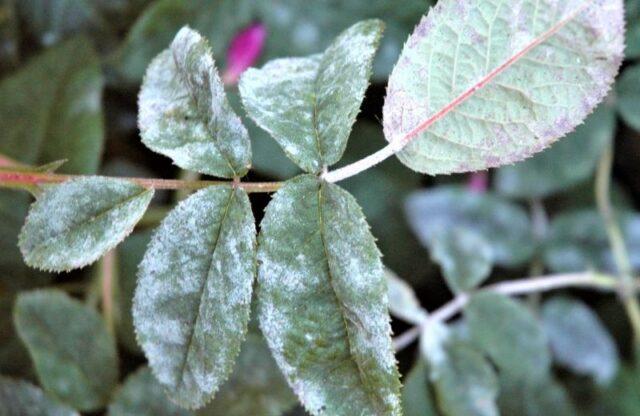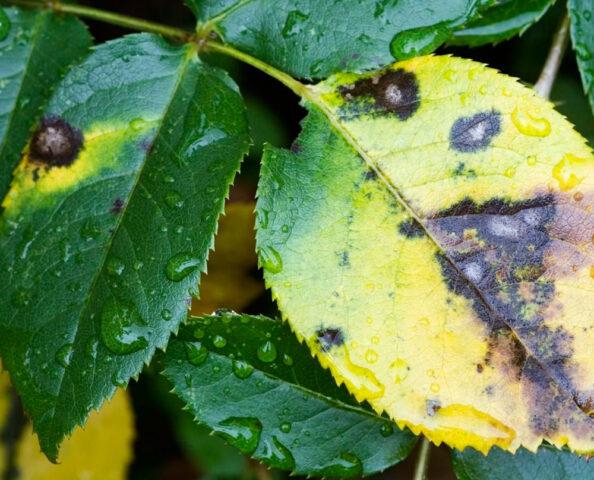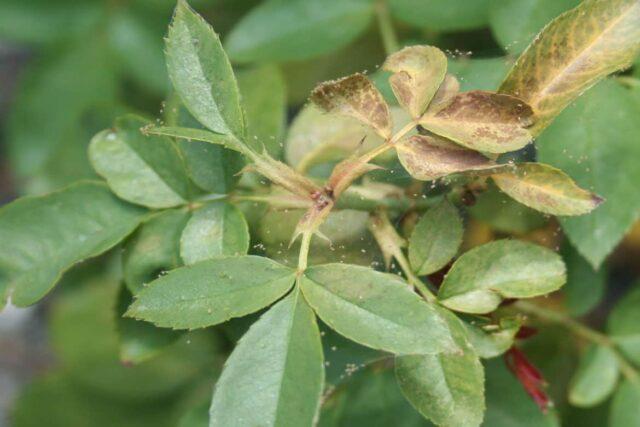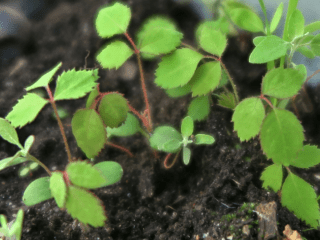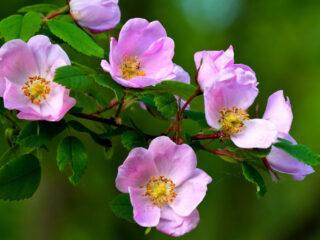Content
Terry rosehip is a beautiful ornamental plant with low maintenance requirements. Planting it in a garden is easy if you study the basic rules.
What does a terry rosehip look like?
Ornamental varieties are called terry, usually hybrids of wrinkled rose hips, in appearance and characteristics close to garden roses. In height, such shrubs reach about 1.5-2 m, they have a developed root system with many offspring. The branches of the terry rose hips are covered with small or large thorns.
From May and throughout the summer, the plant bears fragrant buds on annual shoots. The flowers have a complex structure, each of them consists of 40-60 petals. Terry buds look bright, impressive, and attract attention.
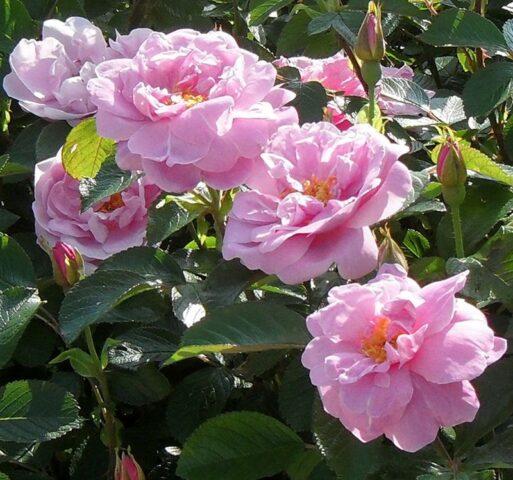
Terry rose hips bear little or no berries at all
Terry rosehip varieties
Terry rose hips are represented by a large number of hybrid varieties. Species are classified primarily by the color of the buds.
Yellow terry rosehip
Yellow terry rose hips are especially popular due to the bright sunny or honey shades of the buds. Looks good against the backdrop of greenery in the garden, combined with plants with white or red flowering.
Agnes
The hybrid variety up to 2.5 m above the ground is highly resistant to unfavorable growing conditions, looks good in curbs and hedges. In early summer, it bears single creamy yellow double buds, each consisting of 40-80 petals. At the edges, the flowers are lighter, towards the middle they become rich amber. Agnes has a pleasant fruity aroma. The buds reach 7 cm in diameter.
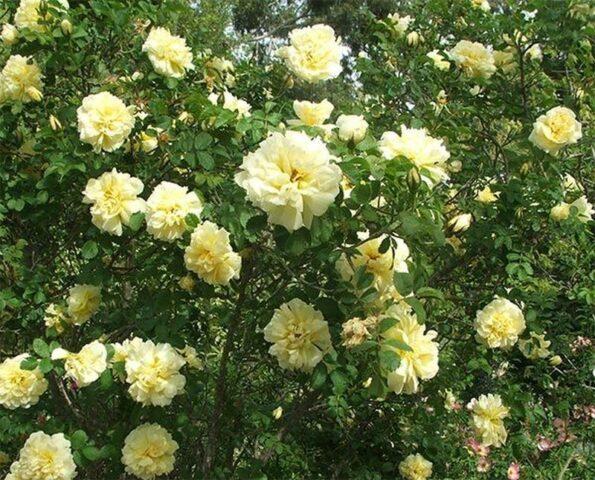
Rosehip Agnes can bloom again in early fall
Rugelda
A hybrid of wrinkled rose hips with repeated flowering in early autumn rises up to 2 m above the ground. Possesses glossy dark green leaves, in June produces lemon-yellow buds up to 9 cm wide with reddish edges. Individual flowers can form small scutes. Rugelda rosehip has good immunity to powdery mildew and black spot, suitable for hedges and art groups.
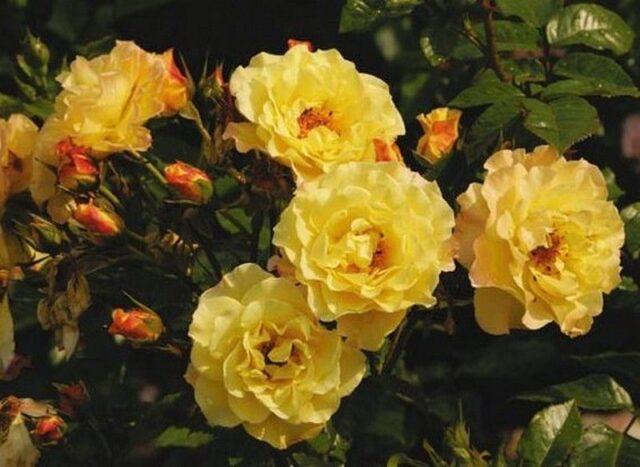
Shoots of Rugeld's rose hips are abundantly covered with thorns
Red terry rosehip
Decorative terry rose hips with red flowers look spectacular in any garden. With its help, it is convenient to place accents on the summer cottage and highlight areas that require special attention.
Kaiserin ties Nordens
Tall shrub up to 2 m above ground level has small dark green leaves with a wrinkled surface. It enters the decorative period at the end of May, in the middle of summer it can bloom again. Brings large double buds of a rich red-crimson hue, collected in inflorescences.
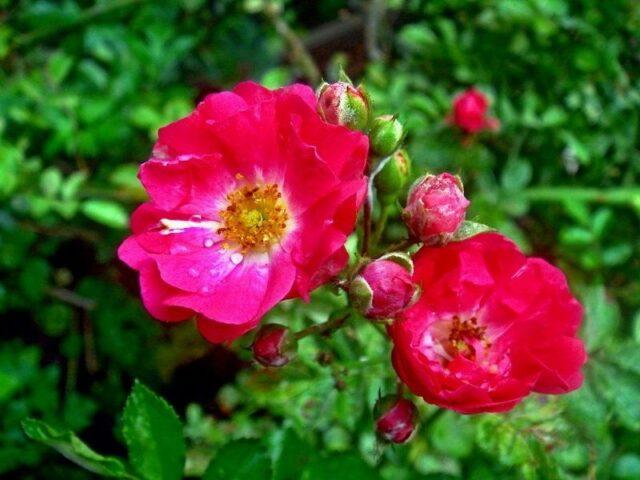
Rosehip variety Kaiserin is distinguished by its high frost resistance.
Hansaland
A hybrid of wrinkled rose hips, which re-blooms in mid to late summer, grows up to 1.8 m and spreads 1 m wide. Differs in rich green leaves with a glossy surface, gives bright red double-type buds up to 7 cm in diameter. It blooms very profusely, looks good in hedges.
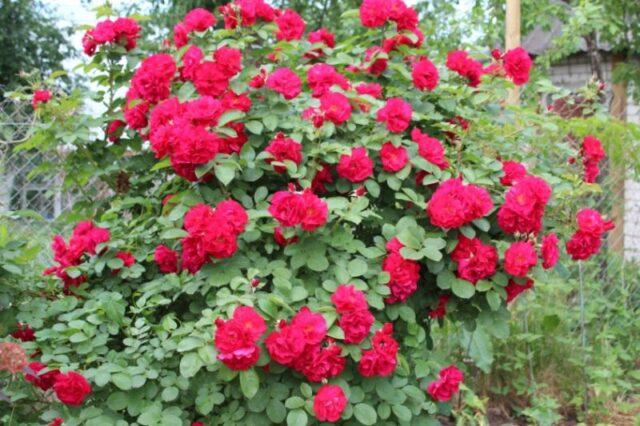
Hansaland is immune to spot and powdery mildew
Rosehip with double pink flowers
Photos of pink terry rose hips demonstrate that the shrub looks very romantic in the garden and helps to create an atmosphere of carefree and lightness. Suitable for single planting, but is more commonly used in art groups with bright red or white flowering perennials.
Muscosa
Terry rose hips of the Muscosa variety belong to low varieties and grows on average up to 1 m. The leaves of the shrub are large and dull, the shoots are covered with thin frequent thorns. The variety blooms with densely double pink spherical buds, consisting of 100-120 petals, single and in small inflorescences. It emits a strong pleasant aroma, tolerates winter cold well.
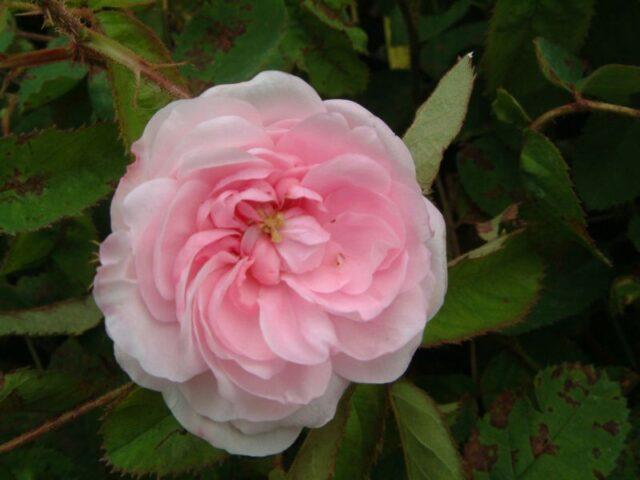
Muscosa buds reach 7 cm in diameter
Hansa
A beautiful plant up to 2 m tall, it has a very abundant flowering. Gives fragrant buds of a pink-purple hue up to 10 cm wide, each consisting of 30-40 petals. Well suited for group and single plantings, used in hedges. At the end of summer, it can bloom again with quality care.
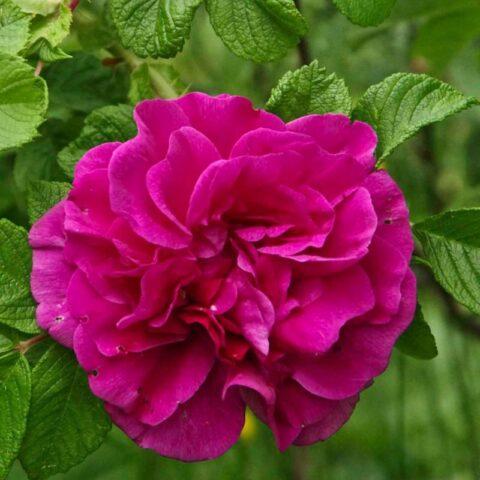
The Khanza variety winters well in the northern regions.
White Terry Rosehip
Bushes of white terry rose hips become a real decoration of the garden. They look equally impressive in sunny areas and in partial shade, and go well with most other flowering plants.
Lac Majeau
A vigorous shrub up to 2 m yields large oval buds of a white shade, collected in inflorescences of up to five pieces. It emits a strong sweet smell, remains decorative from late June to mid-September. White terry fragrant rose hips after flowering bear red fruits, they do not have valuable taste, but they look attractive.
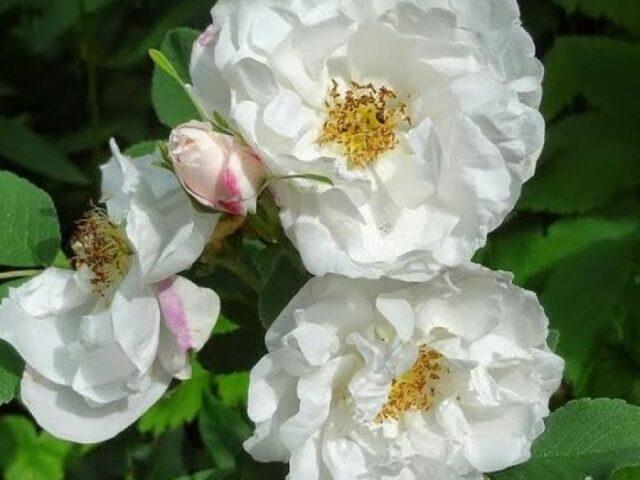
Variety Lak Mezhu has shoots with weak and soft thorns
Alba Meidiland
The unpretentious, beautiful variety Alba Meydiland blooms with lush small double white buds. Flowers are collected in shields up to ten pieces, emit a faint pleasant smell. They do not require pruning at the end of the decorative period, since they disappear on their own. The shrub is low, only up to 70 cm above the ground surface, but at the same time it spreads up to 2 m in diameter.
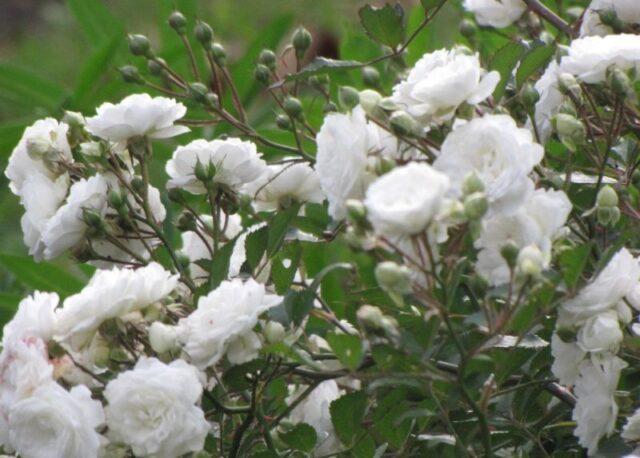
Alba Maidiland blooms from mid-June to September
Planting and caring for a terry rosehip
Terry rose hips in general have the same care requirements as other varieties of culture. Decorative varieties are distinguished by good endurance and strong immunity, but they need regular feeding and haircuts.
Site and soil requirements
Terry rose hips tolerate light shading well. But he feels most comfortable in illuminated areas with a cover from the wind. The soil is required for the shrubs moistened, but without swampiness. In composition, it should be neutral; on acidic or alkaline soil, the culture does not develop well.
How to plant correctly
Planting the plant is best done in autumn - in October or early November. The algorithm looks like this:
- in the selected area, they dig up the soil, if it is acidified, add compost, lime and rotted manure to it;
- make a hole no more than 50 cm in depth - in size it should be twice the size of the roots of the seedling;
- a drainage layer is poured onto the bottom of the recess and the hole is filled to the middle with a mixture of garden soil, compost and peat;
- the seedling is cut, leaving 20 cm of the underground part and 10 cm of the shoots;
- the plant is immersed in a prepared hole and the roots are straightened, and then covered with the rest of the soil mixture.
When planting, the root collar is buried to 8 cm. The seedling is watered abundantly with water and immediately sprinkled with sawdust for mulching around the trunk circle.
When and how to fertilize
For the first time, it is necessary to feed the terry rose hips in the third year after planting. The crop accepts nitrogen fertilizers best of all. They are applied in an amount of about 100 g for each bush in spring and summer - with the beginning of the growing season, before flowering and at its end. After harvesting, the terry rose hips can be fed with potassium and phosphorus - 150-170 g of minerals per plant.
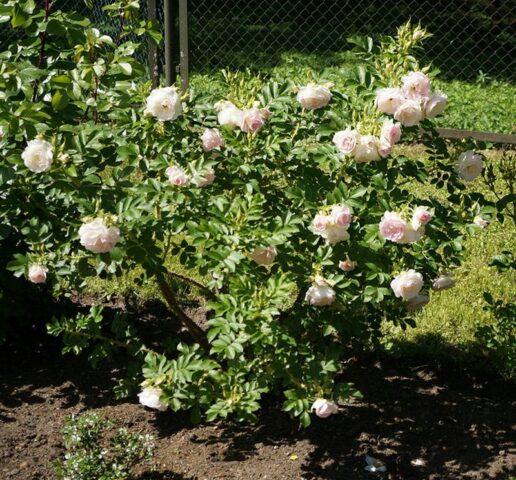
Once every three years, it is recommended to scatter organic matter under the rosehip - rotted manure or compost
Pruning
Decorative terry rose hips require regular pruning. In the second year of life, weakened shoots are removed from the shrub, leaving only the strongest and healthiest. In subsequent seasons, senescent branches are regularly harvested. A neat bush should consist of 4-5 well-developed shoots.
Decorative pruning is carried out annually for terry rose hips. In the course of it, all sick, broken and dried parts that interfere with the development of the bush are removed.
Preparing for winter
Most varietal terry rose hips tolerate winter cold well. But with the onset of autumn, it is required to cover the near-trunk circle with a layer of peat or compost of 10 cm, and also to sketch out fallen leaves and straw. Young plants are covered with burlap or lutrasil along the crown, while flexible shoots are tied up.
Reproduction methods
On the site, terry rose hips can be propagated in several ways:
- Seeds. Fruits for planting material are harvested in August, until spring the seeds are stratified in the refrigerator. In March, the seeds are buried in the soil in pots or boxes and the seedlings are grown at home until fall or the next season.
- By dividing the bush. An adult plant at the age of 5-6 years can be dug up and divided into several parts along the rhizome, so that it can be immediately transplanted into separate holes.
- Offspring. Rosehip produces abundant root growth. Strong offspring up to 40 cm in height can be separated with a shovel and planted in a separate hole.
- Cuttings. At the end of June, green shoots are cut into 10 cm pieces, soaked in water, and then grown in a school until autumn and transferred to a permanent place.
Diseases and pests
Terry rose hips in the garden suffer from several diseases:
- rust - on the underside of the leaves, and then on the shoots, orange-brown spots appear, similar to pads;
In case of rust infection, the rose hips must be treated with copper sulfate.
- powdery mildew - white bloom forms on the leaves, which leads to premature shedding of the plates;
With powdery mildew, spraying with colloidal sulfur and potassium dressings help well.
- black spot - uneven dark marks appear on the leaves of terry rose hips, often resembling burns.
Rosehip black spot is treated with Bordeaux liquid and Fundazol
When the first symptoms of fungi occur, treatment should be started immediately. All affected parts of the bush are removed and burned.
Of the pests for terry rose hips are dangerous:
- spider mite - the insect enmeshes the leaves with a thin cobweb and sucks the juice from the leaves;
With a spider mite, the usual spraying of rose hips with water along the crown and treatment with acaricides help
- slobbering penny - the insect feeds on plant juices and leaves a characteristic whitish mark on the leaves; The slobbering penny is eliminated with insecticidal preparations and soapy water
- rose aphid - the pest can attack the plant abundantly and interfere with development, moreover, it is a carrier of viral infections.
With rosacea aphids, terry rose hips are sprayed with Karbofos and Rogor
Treatments for parasites are carried out several times per season. This is due to the fact that insects lay eggs on the rose hips and can attack the plant in waves 3-4 times from spring to autumn.
What plants is combined with
Decorative terry rose hips go well in group plantings with abelia, verbena, geranium and lavender. Bells, asters and phloxes will become good neighbors for him.
Conclusion
Terry rose hips are distinguished by very beautiful, spectacular flowering and low maintenance requirements. It is possible to grow white, red and yellow plant varieties in all climatic zones with the provision of top dressing and winter shelter.
